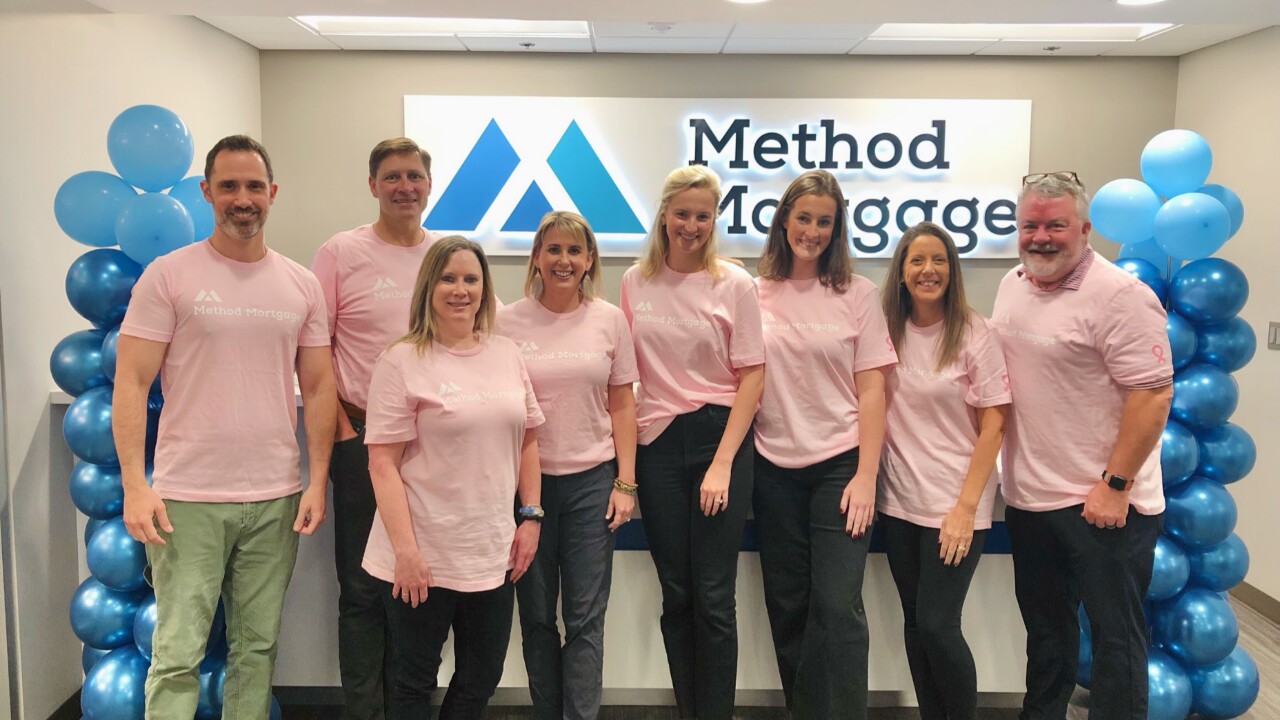Banks currently have the upper hand in a slower lending environment that better allows them to pivot and compete against their nonbank competitors, according to a report from Stratmor Research Group.
"In today's extremely challenging market, banks may have an opportunity to regain some market share from nonbanks by leveraging their liquidity and capital to offer products that nonbanks are simply not able to offer, " said Jim Cameron, senior partner for the mortgage advisory group, in a press release.
Between 2010 and 2021, the bank share of the mortgage market fell from 76% to 37%. The nonbank share grew from 24% to 63% over the same period. Although depository banks aren't likely to increase their participation in the mortgage market to a large degree, they may grab a larger number of consumers with their greater variety of products.

"When thinking about the different product choices out there, whether it is HELOCs, non-QM, construction, ARMs or noncore nonagency loans, banks have real advantages over nonbanks," Cameron said.
If rates remain elevated, those types of loans are likely to continue receiving greater attention, and banks are able to deal with their associated risks in ways that nonbanks cannot. Economists at both the Mortgage Bankers Association and Fannie Mae
The refinance market, in particular, practically disappeared after mortgage rates more than doubled over the past 12 months, leading to
"It is tough for nonbanks to originate HELOCs profitably, as there are few if any investors who will buy funded product at a reasonable price," Cameron wrote in the report.
Despite the advantages banks have in the HELOC space, several nonbanks, including loanDepot and NewRez, jumped on the home equity bandwagon and announced plans to start issuing home equity products of their own in 2022.
"While profitability is not great, there are intangible benefits for nonbanks that originate HELOCs. The key benefit is that nonbank originators can stay in front of their customer (another touchpoint), serve as a trusted financial advisor and provide their customers with a product that they truly need," Cameron noted.
Adjustable-rate mortgages also saw their share of volume regularly grow this year, after beginning 2022 at just over 3% in January to over 10% when interest rates surpassed 7% in the fall, according to the MBA. The percentage has fallen back in the last several weeks, as rates receded.
"Banks are the clear winners in this arena because they can originate ARMs and hold them for investment. Nonbanks must originate for sale to investors, and the number of ARM investors can vary from market to market," Cameron said.
"Right now, there are fewer outlets for ARM loans than most nonbanks would like," he said, adding that prices paid are less favorable than for fixed-rate offerings.
Although the non-QM segment was stymied alongside the conventional market after many were expecting it to be an
"Investor demand for private-label securities backed by non-QM loans has been greatly reduced due to market volatility and uncertainty about the future direction of rates and the economy in general," according to Cameron.
"Nonbanks have been burned by fickle investors who quickly exited the market and others who abruptly shut down," he said alluding to the sudden closures of
Depository-banks' share of the mortgage market diminished rapidly over the past decade after many exited warehouse lending, citing increased risk, Stratmor said. Many banks also do not offer Federal Housing Administration-guaranteed mortgages, leaving them unable to capture a significant number of first-time home buyers. At the same time, they also have been slower to increase or decrease staff as cycles changed, resulting in slower turnaround times and a competitive disadvantage during a booming market, like the one seen in 2020 and 2021.
But smaller staff sizes has also meant the impact of contracting volumes has come in more muted compared to nonbanks, although banks have not been immune to





